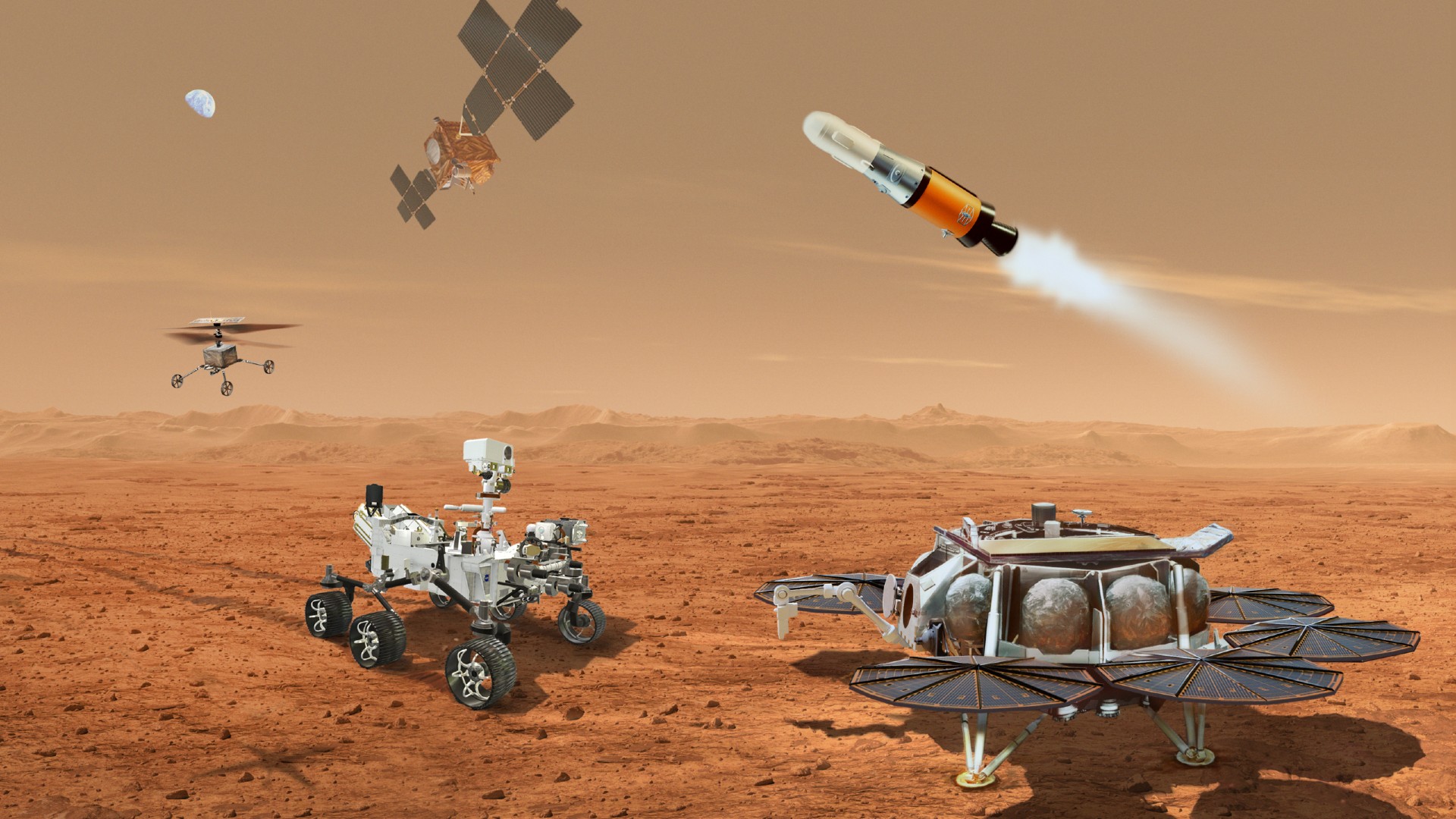The year 2025 isn’t even a week old and NASA is already gearing up for its first big announcement, this one about the agency’s ambitious, yet beleaguered, Mars sample return mission.
On Tuesday (Jan. 7), NASA’s top brass will hold an audio-only press conference to update the public on its Mars sample return program. The media briefing will begin at 1:00 p.m. EST (1800 GMT), and you’ll be able to listen in online via NASA’s website.
NASA Administrator Bill Nelson and Nicky Fox, the agency’s associate administrator for science missions, will host the Mars exploration briefing. “The briefing will include NASA’s efforts to complete its goals of returning scientifically selected samples from Mars to Earth while lowering cost, risk and mission complexity,” NASA officials wrote in a Jan. 3 statement.
NASA’s Mars Sample Return program is designed to do just what its name suggests: return pieces of Mars to Earth so scientists can study the Red Planet up close. To that end, NASA’s Perseverance rover on Mars has already collected and cached a bevy of samples since it arrived on the planet in 2021.
“The agency’s Mars Sample Return Program has been a major long-term goal of international planetary exploration for more than two decades,” NASA wrote in the statement. “NASA’s Perseverance rover is collecting compelling science samples that will help scientists understand the geological history of Mars, the evolution of its climate, and prepare for future human explorers. The return of the samples also will help NASA’s search for signs of ancient life.”
But the mission to return those Perseverance Mars rover samples to Earth is at a crossroads.
One plan to return Perseverance’s samples to Earth called for a lander to touch down near the rover, use a sophisticated robotic arm (or perhaps robotic drones like NASA’s Ingenuity Mars helictoper) to collect the samples from Perserverance and store them in a rocket that would then launch into orbit. Another spacecraft, provided by the European Space Agency, would then collect the sample capsule for the trip to Earth.
In 2020, the estimated cost of that Mars sample return plan maxed out at around $3 billion. By April 2024, the mission’s complexity and technical challenges were clearer, and its price tag rose to an estimated $11 billion at its high end. An assessment in September 2023 also found more bad news: Because of the complicated architecture of the plan, NASA would likely not be able to return Perseverance’s samples to Earth until 2040, a full 20 years after the rover first launched to Mars.

“The bottom line is that $11 billion is too expensive, and not returning samples until 2040 is unacceptably too long,” Nelson said of that finding during an April 2024 media call.
China, for example, plans to launch its own sample return mission to Mars in 2028 with the goal of returning those samples to Earth in 2031. So, NASA isn’t alone in its race to collect samples of Mars.
Throughout 2024, NASA has worked to revamp its Mars sample return plan into a scenario that would reduce its cost and complexity. Tuesday’s media briefing may reveal some of the new thinking that could go into that plan.
Last month, Nelson told reporters at NASA’s Kennedy Space Center that the new Mars sample return plan will include more than just NASA centers.
“What’s coming out is by involving industry, and not NASA centers like [the Jet Propulsion Laboratory], combining with others, they’re coming out with much more practical (proposals), where they can speed up the time and considerably lower the cost,” Spaceflight Now quoted Nelson as saying during the Dec. 18 meeting.
Article by:Source tmalik@space.com (Tariq Malik)






















